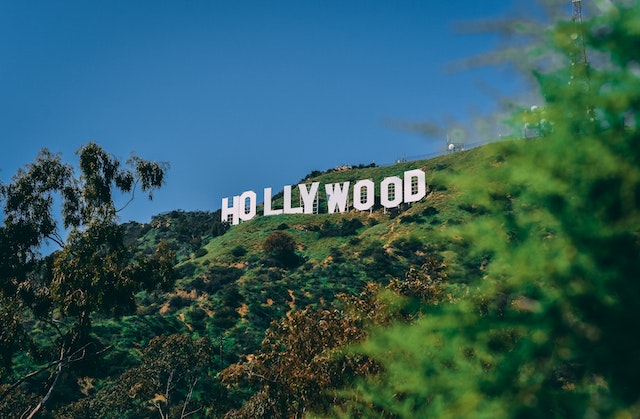Nudity has been a recurring topic of debate and controversy in Hollywood films. There has been varying degrees of pushback from audiences, critics, and industry professionals.
While nudity can be used as a powerful storytelling tool or an artistic expression, its portrayal in films has faced criticism, censorship challenges, and ethical considerations.
In this blog post, we will delve into the pushback on nudity in Hollywood films, exploring the controversies surrounding its inclusion. The ethical concerns raised and the evolving perspectives on nudity in modern cinema.
Objectification and Exploitation
One of the primary concerns raised by critics is the objectification and potential exploitation of performers in nude taking scenes.
There have been instances where nudity has been used gratuitously or solely for titillation purposes, undermining the artistic intent or narrative relevance.
Critics argue that such portrayals perpetuate harmful stereotypes and reinforce societal expectations of the idealized body. There is a growing demand for more equitable and consensual practices within the industry. With a focus on providing performers agency and control over their bodies, choices, and boundaries.

Gender Inequality and Double Standards
Critics have also pointed out the gender disparities and double standards surrounding nudity in Hollywood films.
Female nudity has historically been more prevalent and subject to greater scrutiny than male nudity. This disparity highlights the underlying power dynamics and gender inequality within the industry. Advocates argue for equal representation and the elimination of gender-based expectations and judgments surrounding nudity.
By challenging the double standards, Hollywood can foster a more inclusive and equitable environment for performers and storytelling.
Nudity
The portrayal of nudity in Hollywood films has often faced censorship challenges and rating restrictions.
Film classification boards impose guidelines to determine the appropriateness of content for different audiences. These guidelines can vary across countries and cultures, leading to debates on what constitutes acceptable nudity in films.
Filmmakers must navigate these restrictions while preserving their artistic vision. Often resulting in compromised storytelling or limitations on artistic freedom.
The pushback on censorship involves discussions on the need for a more nuanced and context-based approach to rating systems. It needs to consider the artistic intent and relevance of nudity within the film’s narrative.
Ethical Considerations and Consent
The issue of consent and ethical considerations surrounding nudity in Hollywood films cannot be understated.
Performers should have agency and control over their bodies. With clear communication and consent protocols in place during the filming of nude scenes.
There is a growing emphasis on the importance of fostering safe and respectful work environments. Performers should feel empowered to express their boundaries and have their consent respected.
A Pushback on nudity in film has led to increased dialogue on the necessity of comprehensive guidelines. Also on industry standards, and ongoing education regarding consent and ethical practices.
Evolving Perspectives and Artistic Intent
There are valid concerns and controversies surrounding nudity in Hollywood films. But there is also an evolving perspective on its artistic intent and relevance.
Filmmakers argue that nudity, when handled responsibly and thoughtfully, can contribute to storytelling, character development, and authenticity.
Nudity can be used to convey vulnerability, explore complex emotions, or challenge societal norms.
As audiences become more receptive to diverse storytelling approaches, there is a greater appreciation for the artistic merits of nudity. And its potential to contribute to the overall impact and emotional resonance of a film.
Creative Alternatives and Narrative Impact
Pushback on nudity in Hollywood films has prompted filmmakers to explore creative alternatives and innovative storytelling techniques.
Rather than relying solely on explicit scenes, filmmakers have found ways to convey intimacy and evoke emotional responses. They do this with nuanced performances, suggestive imagery, or imaginative storytelling. This shift allows for a more subtle and artistic approach to exploring human relationships and desires.
By embracing these alternatives, filmmakers can still achieve the desired impact and engage audiences. Without resorting to explicit nudity, addressing some of the concerns raised by critics.
Audience Sensitivities and Cultural Context
Pushback on nudity in Hollywood films also acknowledges the importance of understanding audience sensitivities and respecting cultural contexts.
Different societies and individuals have varying comfort levels and cultural norms when it comes to nudity and sexuality. Filmmakers must be mindful of these nuances and approach nudity in a sensitive and culturally appropriate manner.
By taking into account the cultural diversity of their audiences, filmmakers can ensure that their work is received and appreciated in a manner that aligns with the values and sensibilities of the intended viewers.
Changing Industry Standards and Practices
Pushback on nudity in Hollywood films has led to introspection and calls for change within the industry.
Filmmakers, actors, and industry professionals have engaged in discussions to establish clearer guidelines and best practices around nudity in film. These conversations have prompted a reevaluation of casting processes, contract negotiations. And the inclusion of intimacy coordinators on set.
By fostering a more transparent and accountable working environment, the industry aims to create spaces where performers feel safe, respected, and empowered.
Pushback on nudity has catalyzed a broader examination of the industry’s culture and practices, encouraging positive change for all involved.
Nudity in Hollywood films reflects a complex and evolving dialogue surrounding ethics, representation, and storytelling.
Concerns over objectification, gender inequality, censorship, and consent are essential. But there is also recognition of the artistic merits and potential impact of nudity when handled responsibly.
Exploring creative alternatives, understanding audience sensitivities, and implementing changing industry standards. Doing all that means Hollywood can navigate the pushback and create a more inclusive and respectful environment for all involved.
It is through open dialogue, continuous improvement, and a commitment to ethical practices that the industry can embrace a nuanced and responsible approach to nudity in film, promoting diversity, artistic integrity, and the well-being of performers.

Meet Rick, Adultsmart’s owner with 35+ years in the adult industry. A sex blogger, advocate for gender and sexuality equality, offering a diverse product range.








Leave a Reply